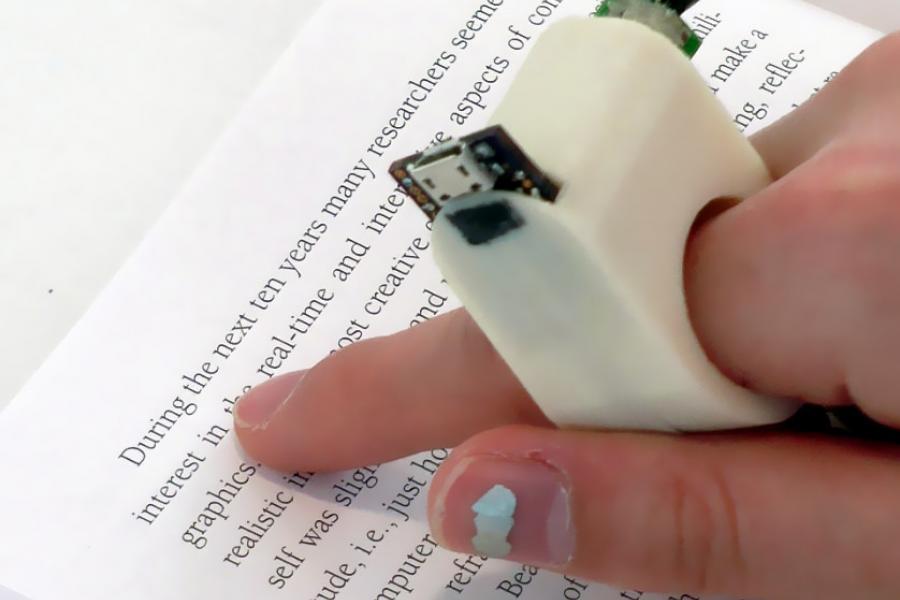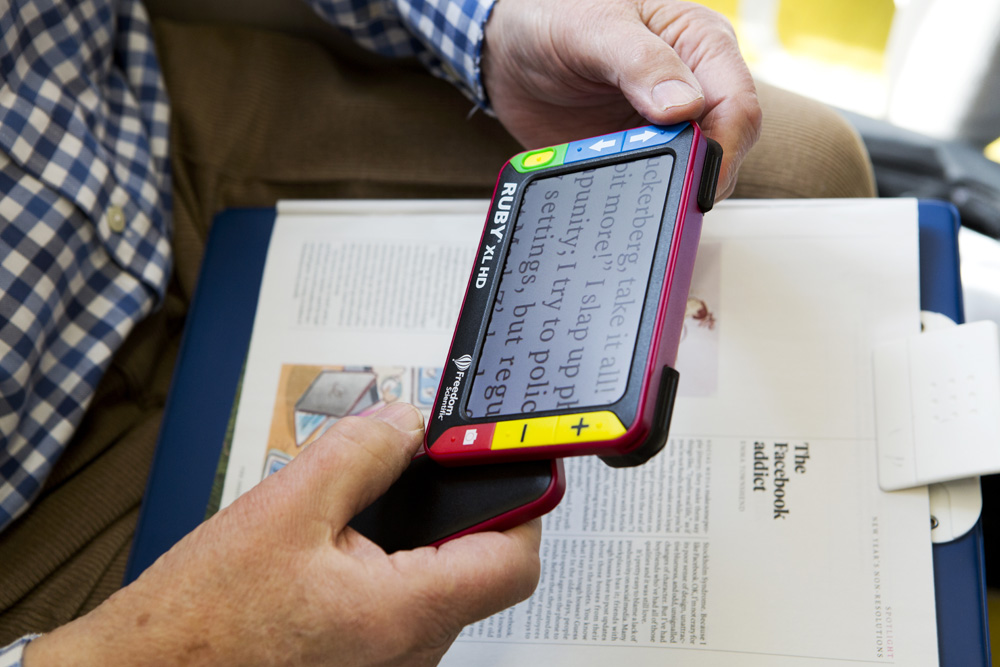Smart Glasses for the Visually Impaired: Advances in Vision Support
Smart Glasses for the Visually Impaired: Advances in Vision Support
Blog Article
Enhancing Lives With Advanced Assistive Tools for the Blind
The integration of sophisticated assistive gadgets for the blind is transforming exactly how people experience their environments and interact with their areas. What does this evolution imply for the future of assistive modern technology and its role in empowering individuals?
Introduction of Assistive Devices
Assistive gadgets for the blind include a varied series of technologies and devices designed to boost independence and enhance the quality of life for individuals with visual impairments. These gadgets accommodate various demands, from navigating and wheelchair to communication and day-to-day job management.
One of the primary categories of assistive devices consists of movement aids, such as white canes and overview dogs, which aid customers browse their environments safely. Electronic traveling help, geared up with sensing units and audio feedback, likewise play a considerable function in wheelchair improvement.
Furthermore, tools that aid with day-to-day living tasks, such as adaptive kitchen devices, Braille tags, and talking watches, equip individuals to perform tasks individually. Communication aids, including screen readers and Braille displays, promote access to info and enable people to engage properly with the electronic world.
Additionally, low-tech solutions like amplifying glasses and large-print materials remain vital for several individuals. Collectively, these assistive devices serve not just as functional tools however likewise as vital enablers of autonomy, fostering higher participation in a globe that commonly prioritizes sighted experiences. Their assimilation right into life is essential for advertising inclusivity and enhancing total health for those with visual disabilities.
Cutting-edge Technologies in Usage
Development in modern technology has dramatically transformed the landscape of devices readily available for individuals with visual impairments. Amongst one of the most noteworthy advancements are smart glasses integrated with augmented fact, which supply real-time navigating aid and item acknowledgment. These devices utilize progressed video cameras and synthetic knowledge to provide auditory signs, boosting the user's spatial awareness and autonomy.
Furthermore, mobile applications have actually become powerful resources, enabling customers to identify money, reviewed text aloud, and navigate unfamiliar settings through verbal directions. Devices such as Braille screens and refreshable Braille tools proceed to advance, using smooth connection with computers and mobile phones, thus enhancing interaction and access to details.
Wearable innovation, including smartwatches furnished with voice-activated functions, further empowers users by helping with fast accessibility to notices and signals without needing visual engagement. Responsive maps and 3D printing are likewise acquiring grip, using substantial depictions of areas that help in positioning and movement training.
Collectively, these cutting-edge innovations not only improve the lives of visually damaged individuals yet likewise foster better independence, inclusivity, and engagement with the more comprehensive community, consequently improving perceptions of accessibility. (Wearable technology for low vision)
Individual Stories of Empowerment
Empowerment usually emerges from personal experiences that highlight the transformative impact of technology on people with aesthetic disabilities. Take, for example, the story of Sarah, a young artist that reclaimed her passion for paint via using a clever cane equipped with challenge discovery. This gadget not just facilitated her mobility however instilled a newfound confidence, enabling her to navigate public spaces separately and pursue her innovative endeavors.

These narratives underscore the extensive impacts that advanced assistive devices can carry day-to-day live. By enabling people to get rid of obstacles, innovation cultivates a feeling of freedom and self-respect. Such empowerment stories offer as a testimony to the capacity of innovation, illustrating exactly how the right tools can considerably improve quality of life and open doors to new possibilities for those with aesthetic disabilities.
Advantages of Advanced Solutions
The integration of advanced modern technology right into assistive devices considerably transforms everyday experiences for those impacted by vision loss. Braille displays and notetakers. Devices such as clever walking sticks equipped with sensing units, navigation applications, and wearable innovation are developed to provide real-time responses, enhancing spatial awareness and reducing the dangers connected with flexibility.
Furthermore, progressed assistive navigate to these guys innovations cultivate social incorporation by facilitating interaction and interaction. Voice-activated devices and apps allow people to accessibility details and involve with their surroundings individually, damaging barriers that previously impeded their engagement in educational, specialist, and social settings.
In enhancement, the modification and adaptability of these options accommodate the varied demands of customers, thus boosting their total lifestyle. Improved capability, such as things acknowledgment and text-to-speech capacities, equips people with visual problems to execute jobs that they may have as soon as located challenging. Eventually, progressed assistive technologies not just improve self-reliance and security yet additionally advertise self-respect and self-respect, enabling individuals to lead satisfying lives.
Future Fads in Assistive Technology
As innovation remains to evolve, the landscape of assistive devices for the blind is positioned for exceptional advancements that will certainly additionally enhance accessibility and self-reliance. Emerging trends in assistive technology suggest a shift towards boosted combination of fabricated knowledge (AI) and artificial intelligence, making it possible for devices to adjust to see here private user needs in real-time. These developments are anticipated to assist in more instinctive navigation systems that can recognize obstacles and give audio responses, considerably boosting outside wheelchair.
In addition, the development of wearable tech, such as smart glasses geared up with augmented fact, will enable individuals to obtain contextual information concerning their environments, therefore improving their spatial recognition. Developments in haptic modern technology pledge to produce responsive feedback gadgets, allowing individuals to view details via touch, improving knowing and communication with their environment.
Telecommunication advancements are likewise paving the means for remote help solutions, where skilled specialists can supply assistance by means of video phone calls, making certain assistance is readily available. As these trends unravel, the future of assistive tools for the blind will most certainly promote higher freedom, encouraging people to navigate their globe with confidence and simplicity.

Final Thought
The assimilation of sophisticated assistive tools for the blind represents a significant advancement in fostering self-reliance and boosting lifestyle. By utilizing cutting-edge innovations, these tools encourage users to browse their environments with better self-confidence and autonomy. As the area remains to advance, ongoing r & d will likely yield a lot more innovative options, better transforming the lived experiences of individuals with visual problems and promoting a better sense of inclusion within society.
The go to the website combination of advanced assistive devices for the blind is transforming just how people experience their environments and connect with their areas. The assimilation of cutting-edge technology right into assistive tools substantially transforms everyday experiences for those influenced by vision loss.As technology proceeds to develop, the landscape of assistive gadgets for the blind is positioned for amazing innovations that will additionally enhance access and independence. Arising trends in assistive modern technology indicate a shift toward boosted assimilation of fabricated knowledge (AI) and equipment knowing, making it possible for tools to adjust to individual user requires in real-time.The integration of sophisticated assistive tools for the blind represents a considerable innovation in cultivating independence and improving quality of life.
Report this page